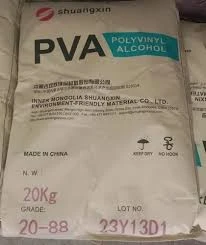Understanding Methylcellulose A Focus on HPMC
Methylcellulose, a cellulose derivative, plays a significant role in various industries due to its versatile properties. Among its many forms, Hydroxypropyl Methylcellulose (HPMC) is particularly noteworthy. This compound is widely used in food, pharmaceuticals, construction, and cosmetics, owing to its unique characteristics and functional advantages.
What is Methylcellulose and HPMC?
Methylcellulose is derived from cellulose through a process that involves the substitution of hydroxyl groups on the cellulose polymer with methoxy groups. This chemical modification enhances its solubility in water, resulting in a polymer that behaves as a thickening agent, emulsifier, stabilizer, and film-former. Hydroxypropyl Methylcellulose (HPMC) is a specific type of methylcellulose that has been further modified by adding hydroxypropyl groups, enhancing its properties.
HPMC is a white, odorless powder that is non-toxic and soluble in cold water. When mixed with water, it forms a viscous gel, making it a valuable ingredient in many formulations. Its high viscosity even at low concentrations makes it a popular choice in various applications, from food products to pharmaceutical formulations.
Applications of HPMC
1. Food Industry In food products, HPMC is used as a thickener, stabilizer, and emulsifier. It can enhance the texture of sauces, soups, and dressings while also extending their shelf life. Additionally, HPMC serves as a vegetarian alternative to gelatin, making it ideal for vegan and vegetarian products.
2. Pharmaceuticals HPMC is commonly used in the pharmaceutical industry as a binder in tablet formulations and as a controlled-release agent. Its gel-forming ability helps in the slow release of active pharmaceutical ingredients, improving drug efficacy and patient compliance.
methyl cellulos hpmc

3. Construction In building materials, particularly in cement-based products, HPMC acts as a thickener and water-retention agent. This property ensures better workability and makes it easier to apply products like tile adhesives and plaster, contributing to a higher quality finish.
4. Cosmetics HPMC is also extensively used in personal care products, such as creams, lotions, and shampoos. It enhances the product's texture and stability, providing a smooth and silky feel to formulations. Its ability to form a film on the skin or hair improves moisture retention.
Benefits of Using HPMC
The use of HPMC comes with several benefits. Its non-ionic nature makes it compatible with various ingredients, minimizing the risk of adverse reactions. Additionally, HPMC is non-toxic and biodegradable, aligning with the increasing demand for environmentally-friendly and safe ingredients in consumer products. Its stability over a wide range of pH levels further enhances its versatility.
Moreover, the ability of HPMC to retain moisture is particularly advantageous in applications such as skincare products, where hydration is critical. This property also contributes to the extended shelf life of food products, reducing waste and improving sustainability.
Conclusion
Methylcellulose, specifically Hydroxypropyl Methylcellulose (HPMC), is a remarkable compound with a wide array of applications across multiple industries. Its unique properties—such as solubility in cold water, thickening ability, and non-toxic nature—make it a key ingredient in food products, pharmaceuticals, construction materials, and cosmetics. As industries continue to seek innovative and environmentally responsible solutions, the demand for HPMC is likely to grow, cementing its status as an essential polymer in modern formulations. Understanding and utilizing the benefits of HPMC can lead to advancements in product development, enhancing both performance and consumer satisfaction.
-
A Comprehensive Guide to Methyl Ethyl Hydroxyethyl Cellulose: Applications and Industry InsightsNewsNov.24,2025
-
Understanding Methyl 2 Hydroxyethyl Cellulose: Uses, Benefits & Industry InsightsNewsNov.24,2025
-
Hydroxyethyl Methyl Cellulose HEMC: Industrial Uses, Benefits & Future TrendsNewsNov.23,2025
-
HEMC Cellulose: Versatile & Sustainable Industrial Polymer | YoungcelNewsNov.23,2025
-
Methyl Hydroxyethyl Cellulose: Versatile Building Block for Industry & SustainabilityNewsNov.23,2025
-
CAS 9032 42 2: Understanding Polyvinyl Alcohol's Impact on Industry & SustainabilityNewsNov.22,2025




